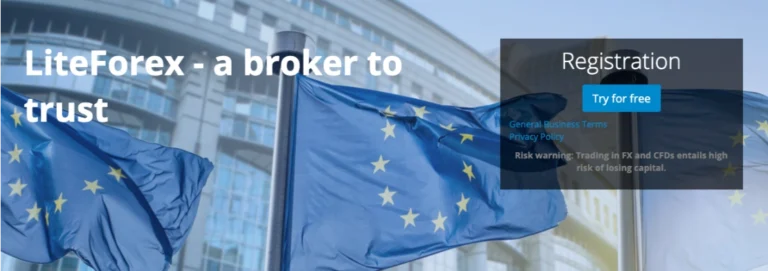Table of Contents
LiteForex (now LiteFinance) has been operating since 2005, claiming to offer trading services across forex, commodities, and cryptocurrency markets. While the broker presents itself as a regulated entity under CySEC license, there are concerning patterns that every potential trader should carefully evaluate. This LiteForex review aims to uncover whether this broker is a legitimate trading platform or just another forex scam targeting unsuspecting investors.
Introduction to LiteForex
If you’ve been researching LiteForex (now rebranded as LiteFinance) as a potential broker or if you’ve already deposited funds and are struggling with withdrawals, you’re in the right place. Many traders find themselves in your position – either contemplating investing with this broker or already caught in what might be a sophisticated trap.
LiteForex claims to offer trading in multiple markets including forex, commodities, indices, and cryptocurrencies through MetaTrader 4 and MetaTrader 5 platforms. The company reports being founded in 2005 with its European entity established in Cyprus in 2008.
Whether you’re researching before depositing or desperately searching “is LiteForex a scam” after experiencing withdrawal issues, this review will provide crucial information to protect your investment. We’ve analyzed regulatory status, user complaints, operational patterns, and warning signs to give you the full picture of LiteForex’s legitimacy.
Regulation Breakdown
When evaluating if LiteForex is legitimate or a potential scam, regulation is the first critical aspect to examine. According to their website, LiteForex (Europe) LTD operates under CySEC regulation with license number 093/08, based in Limassol, Cyprus. This appears legitimate at first glance.
However, here’s where it gets concerning:
While the European entity may hold CySEC regulation, many users report being directed to offshore entities during the registration process, which operate under much looser regulatory frameworks without the same investor protections. This practice, known as regulatory arbitrage, is a common tactic among questionable brokers.
Furthermore, the company has undergone a significant rebranding from LiteForex to LiteFinance, which raises questions. While rebranding is not inherently suspicious, in the forex industry it can sometimes be a way to distance from negative reviews or regulatory issues.
It’s crucial to verify any claimed regulation directly with the regulatory body rather than taking the broker’s word for it. You can check LiteForex’s CySEC license authenticity by searching their license number (093/08) on the CySEC registry.
User Complaints
The volume and pattern of user complaints provide revealing insights into LiteForex’s business practices. Across various review platforms and forex forums, we’ve observed concerning trends:
Withdrawal Issues
The most common complaint involves withdrawal problems. Users report:
- Excessive delays stretching weeks or months
- Arbitrary account freezes when withdrawal requests are made
- Additional verification requirements suddenly appearing after profitable trades
- Complete silence from customer support during the withdrawal process
One user commented: “After making consistent profits and requesting a $5,000 withdrawal, my account was suddenly ‘under review’ for two months with no explanation. Support stopped responding completely.”
Customer Service Disappearing Act
Another alarming pattern involves customer service responsiveness:
- Prompt and helpful service during the deposit phase
- Aggressive account managers pushing for larger deposits
- Complete disappearance or severely delayed responses once issues arise
- Circular support tickets that never resolve problems
These patterns align with classic scam broker behavior, where resources are devoted to acquiring deposits but not to addressing legitimate customer concerns.
It’s worth noting that many positive reviews found online appear suspiciously similar in language and structure, raising questions about their authenticity. Legitimate brokers typically show a more natural mix of positive and negative feedback.
The Psychology of the Trap: Reviews on How Users Got Scammed
Understanding how traders fall victim to potential scams like LiteForex requires examining the psychological tactics employed. Based on user testimonials, here’s how the trap typically unfolds:
The Bonus Trap
LiteForex has reportedly offered generous bonuses to new depositors. While bonuses seem attractive, they often come with predatory terms:
- Trading volume requirements that make withdrawal nearly impossible
- Terms that lock both your deposit and profits until impossible conditions are met
- Fine print that gives the broker discretion to void winnings for “suspicious trading”
One trader reported: “I deposited $1,000 and got a $500 bonus. I couldn’t withdraw anything until I’d traded 30 times the bonus amount—that’s $15,000 in trading volume! By the time I realized the trap, my account had been depleted through ‘trading losses’.”
Account Manager Manipulation
Many victims report being assigned personal account managers who initially provide seemingly valuable advice leading to small profits. This builds trust before the real manipulation begins:
- Pressure to deposit more funds to “capitalize on opportunities”
- Suggestions to take dangerous leveraged positions
- Encouraging trading during volatile market conditions
- Offering to trade on the client’s behalf for “guaranteed returns”
This psychological manipulation exploits the human tendency to trust authority figures and the fear of missing out on potential profits.
Platform Manipulation
Several users have reported suspicious platform behavior:
- Prices that deviate significantly from market rates at crucial moments
- Sudden platform “technical issues” during profitable trade closings
- Unexplained slippage that only seems to work against the trader
- Trades executed at prices different from what was displayed
While it’s difficult to definitively prove platform manipulation, the consistency of these reports across multiple users suggests systematic issues rather than coincidences.
Too Many Red Flags to Ignore
Beyond the direct user experiences, our investigation into LiteForex revealed several objective warning signs that potential investors should consider:
Domain and Corporate Structure Concerns
The transition from LiteForex to LiteFinance raises questions. While rebranding can be legitimate, in the forex industry it’s often used to escape negative reviews or regulatory issues. Additionally:
- Multiple corporate entities using similar branding but different regulatory status
- Opaque ownership structure that makes it difficult to determine who actually controls the company
- Discrepancies between claimed operating history and domain registration information
You can verify domain history using tools like WebParanoid, which shows when websites were created and modified.
Suspicious Review Patterns
The online review landscape for LiteForex shows concerning patterns indicative of reputation management rather than genuine customer satisfaction. We observed:
- Clusters of 5-star reviews with similar writing styles appearing within short timeframes
- Positive reviews that lack specific details about actual trading experiences
- Defensive responses to negative reviews that attack the reviewer rather than addressing concerns
- Significant discrepancies between ratings on different platforms (suspiciously high on some, extremely low on others)
Authentic customer experiences typically show more variation in writing style, specific details, and a natural distribution of ratings.
Aggressive Marketing Tactics
LiteForex employs marketing strategies that responsible brokers typically avoid:
- Promises of unrealistic returns or “risk-free” trading
- Heavy promotion of high leverage (up to 1:500 for non-EU clients)
- Emphasis on bonuses and promotions rather than platform reliability or execution quality
- Targeting inexperienced traders with simplified messaging about complex financial instruments
According to financial regulatory best practices, ethical brokers focus on education and risk management rather than promotional offers designed to attract deposits.
You can check the trustworthiness score of LiteForex using the Scam Detector tool, which evaluates websites based on various trust signals.
How to Test Whether LiteForex Is a Scam
If you’re still considering LiteForex or need to verify your suspicions, here are practical steps to test the broker’s legitimacy:
Verify Regulation Directly
Don’t take the broker’s word on regulation:
- Visit the CySEC website directly and search for license number 093/08
- Check which specific entity you’re actually signing up with during registration
- Verify if the regulated entity covers clients in your country
Remember: Many scam brokers display regulatory logos but direct you to unregulated entities during sign-up.
Test the Withdrawal Process
The most reliable test of a broker’s legitimacy is attempting a withdrawal:
- Start with a small deposit (the minimum amount)
- Make a few trades, then immediately request a withdrawal
- Time how long the process takes and document all communication
- Decline any bonus offers, as these often restrict withdrawals
A legitimate broker processes withdrawals promptly without unnecessary obstacles.
Evaluate Customer Service Responsiveness
Test support before and after depositing:
- Ask detailed questions about withdrawal policies before depositing
- Request written clarification on any vague terms and conditions
- After depositing, ask another complex question and compare response quality and time
- If responses deteriorate after depositing, that’s a serious warning sign
Professional brokers maintain consistent service quality regardless of account status.
Compare Execution Quality
Test the trading conditions with a small account:
- Compare quotes with those from established platforms like TradingView
- Test slippage on market orders during both quiet and volatile periods
- Check if stop-loss orders execute at the specified price
- Document any unexplained platform issues during profitable trades
Significant deviations from market rates or selective platform “glitches” suggest manipulation.
LiteForex Red Flag Checklist
| Warning Sign | Present? | Severity Level |
|---|---|---|
| Withdrawal delays/complications | Yes | High |
| Regulatory mismatch (EU vs. actual entity) | Yes | High |
| Aggressive bonus promotion | Yes | Medium |
| Unresponsive customer service | Yes | High |
| Suspicious review patterns | Yes | Medium |
| Platform execution issues | Yes | High |
| Unrealistic profit promises | Yes | High |
| Recent rebranding | Yes | Medium |
Final Scam Review Verdict – Is LiteForex Scam or Not?
After thorough investigation of LiteForex (LiteFinance), we must issue a HIGH CAUTION warning to potential investors. While the broker maintains a CySEC license for its European entity, multiple serious red flags suggest a problematic operation:
- Consistent pattern of withdrawal difficulties reported by users
- Suspicious regulatory structure with possible direction to offshore entities
- Questionable marketing tactics focused on bonuses and high leverage
- Concerning pattern of customer service deterioration after deposits
- Reports of platform manipulation during profitable trades
The weight of evidence suggests LiteForex exhibits many characteristics consistent with problematic forex operations, if not outright scams. While we cannot definitively label it a scam without legal determination, the risk factors are significant enough that traders should approach with extreme caution or consider more transparent alternatives.
At minimum, investors should be aware that their experience may differ significantly from what’s advertised, particularly when attempting to withdraw profits.
What to Do If You’ve Been Scammed by LiteForex
If you believe you’ve fallen victim to fraudulent practices by LiteForex, take these immediate steps:
Document Everything
Start building your case immediately by preserving evidence:
- Take screenshots of your account balance, trading history, and withdrawal requests
- Save all email communications with LiteForex representatives
- Record dates, times, and details of phone conversations
- Screenshot any bonus terms or conditions that may have been violated
- Preserve any marketing materials that made unrealistic promises
Contact Your Payment Provider
Take action with your payment method:
- For credit card deposits: Contact your bank immediately to dispute the charges (typically within 120 days)
- For bank transfers: Contact your bank’s fraud department, though recovery may be difficult
- For cryptocurrency deposits: Unfortunately, these are typically irreversible, but report the receiving addresses to crypto tracking services
Important: Never make additional deposits to “unlock” your funds – this is a common follow-up scam tactic.
Report to Regulators
File formal complaints with relevant authorities:
- Report to CySEC if you were dealing with the European entity
- File a complaint with your country’s financial regulator
- Report to international forex regulatory bodies
- Submit details to consumer protection agencies
While regulators may not recover your funds directly, your report helps build cases against fraudulent operations and protects others.
Consult with Recovery Specialists
Consider professional assistance:
- Consult with a financial fraud attorney familiar with forex scams
- Speak with a professional fraud analyst who specializes in broker scams
- Be cautious of recovery services demanding upfront fees – some are secondary scams
Recovery professionals can provide guidance on your specific situation and realistic recovery possibilities based on documentation and circumstances.
Protect Yourself from Further Harm
Take steps to prevent additional losses:
- Change passwords for email and financial accounts
- Monitor your credit reports for unauthorized activity
- Be wary of “recovery specialists” who contact you unsolicited – these are often secondary scams
- Educate yourself about safe trading through reputable resources like comprehensive scam knowledge guides
Remember that recovery from forex scams can be difficult, but taking prompt action maximizes your chances. The most important step is preventing further losses by cutting contact after securing your evidence.
For traders looking to avoid similar situations in the future, thoroughly research any broker before depositing funds. Look for consistent positive reviews across multiple platforms, clear regulatory information, and transparent withdrawal policies.
If you’ve had experiences with LiteForex, sharing them can help protect the trading community and alert others to potential risks. The more documentation available about problematic brokers, the fewer traders will fall victim to similar schemes.



